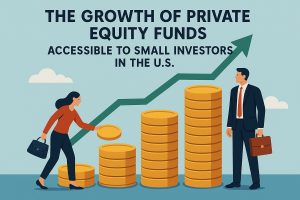In the dynamic landscape of property investment, understanding effective strategies for investing in commercial real estate in 2025 is crucial for success. As we advance towards this pivotal year, investors are keen to explore options that offer sustainable growth and profitability. The commercial realty market in the United States presents a plethora of opportunities, but navigating these requires a strategic approach.
This article delves into eight key techniques that can guide investors toward making informed decisions, ensuring that they not only enter the market effectively but also capitalize on emerging trends that promise lucrative returns.
Understanding market trends

Amidst post-pandemic recovery, recognizing and adapting to evolving market trends is essential for investors eying commercial spaces. The realty market is currently influenced by factors such as shifting work paradigms, e-commerce expansion, and sustainability demands. Investors must stay informed about these dynamics to align their strategies with prevailing trends.
The rise of remote work, for instance, affects office space requirements, prompting a shift towards flexible co-working environments. Similarly, the e-commerce boom has heightened the demand for warehouse and logistics spaces. Understanding these underlying trends will empower investors to spot lucrative opportunities and make impactful investment decisions.
Identifying emerging markets
Recognizing and investing in emerging demographics and regions is a pivotal strategy for informed property investors in 2025. These areas often provide unique returns due to factors like rapid urbanization and technological advancements. For instance, secondary cities and suburban areas are witnessing an influx of businesses seeking cost-effective and expansive locations.
Such areas present untapped potential, offering lower acquisition costs and promising growth avenues. Investors keen on diversifying portfolios should actively scout these emerging prospects, positioning themselves to capitalize on the first-mover advantage in less saturated markets.
Assessing risk and resilience
Elaborating on strategies for investing in commercial real estate involves meticulous risk assessment and fostering investment resilience. Different aspects such as economic downturns, interest rate changes, and environmental impacts contribute to investment risks.
Developing a comprehensive risk management framework is imperative to mitigate these challenges, especially in a complex and fluctuating market environment. Investors must consider diversifying their portfolios to balance high-risk, high-reward scenarios with more stable options, ensuring consistent profitability regardless of broader economic conditions.
Leveraging technology and innovation
Utilizing technology and innovative solutions is essential for modern investors seeking to enhance their commercial real estate ventures in 2025. The integration of tech advancements such as artificial intelligence, predictive analytics, and virtual reality within property management processes enhances efficiency and cost-effectiveness.
By adopting these tools, investors can gain deeper insights, improve decision-making, and streamline operations. Additionally, technology can facilitate improved tenant experiences, with smart building features leading to higher occupancy rates and tenant satisfaction, further boosting long-term investment yields.
PropTech startups are transforming how properties are bought, sold, and managed, offering novel platforms that streamline transactions and property management. Investors should stay updated on the latest technological developments and consider partnering with or investing in promising PropTech ventures.
These collaborations can offer competitive advantages, keeping stakeholders ahead in an ever-evolving market. Embracing technology not only improves operational efficiency but also enhances value propositions for prospective tenants and buyers, ultimately resulting in stronger investment returns.
Focusing on eco-friendly developments
Prioritizing eco-friendly developments aligns investors with modern environmental standards and enhances sustainability within their portfolios. The push for green infrastructure and sustainable property initiatives is rapidly becoming a focal point in the commercial property sector.
Constructing eco-conscious buildings and utilizing renewable energy sources attract environmentally aware tenants and meet increasing regulatory requirements. Investors committed to sustainability benefit from reduced energy costs, tax incentives, and government grants specifically tailored for green projects.
Adopting sustainable practices requires understanding the life-cycle impact of development projects. This involves selecting sustainable materials, incorporating energy-efficient technologies, and implementing waste reduction processes.
By collaborating with architects and engineers specializing in sustainable design, investors can ensure their projects meet contemporary expectations. Furthermore, certifications like LEED (Leadership in Energy and Environmental Design) signal to stakeholders and potential tenants a commitment to sustainability, enhancing the reputation and desirability of properties.
Ultimately, eco-friendly projects can offer long-term financial gains due to increased demand for sustainable facilities. Tenants and businesses increasingly seek properties that align with their environmental ethos, fitting into larger corporate sustainability frameworks.
By focusing on green development practices, investors not only contribute positively to environmental conservation but also strategically position themselves to benefit from emerging market trends, ensuring sustainable growth and financial success in the commercial real estate landscape of 2025.



